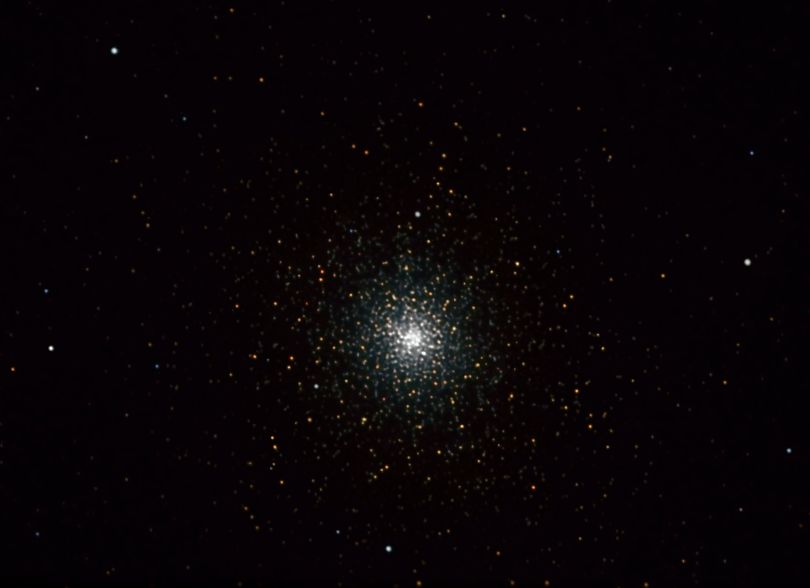
47 Tucanae is the second finest globular star cluster in the sky, second only to the Omega Centauri globular star cluster. This star cluster is only visible in the southern hemisphere, and cannot be seen from the United States. It is located near the southern celestial pole, only about 2 - 1/2 degrees from the Small Magellanic Cloud. This object was discovered by Abbe de Lacaille in 1755 when he was conducting observations from the Cape of Good Hope. It is about 50 arc-minutes in size, and visible to the naked eye. The star cluster is rated at about magnitude 4.
Also known as NGC 104, it is one of the closest globular star clusters. The globular cluster is 13,000 light-years away. Several million stars make up this dense cluster. 47 Tucanae has an unusually high metalicity as compared to typical globular clusters. Another peculiar feature of this star cluster is that RR Lyrae type variable stars are extremely scarce in 47 Tucanae. The star cluster is home to several exotic x-ray binary star systems. There are fewer bluer stars in this star cluster that what would normally be expected to form the horizontal branch on an HR diagram. The globular star cluster is 120 light-years in diameter.
This is an LRGB color composite CCD image. The image was taken using a Takahashi FS-78 refractor, and an SBIG ST-8XE CCD.
NGC 104
Constellation: Tucana
RA: 00h 24m 26s Dec: -72d 02' 52"
Sept. 2 & 4, 2005
Image by Sid Leach
Lake Titicaca, Bolivia
Recent Images.
Complete list of images.
Description of equipment used to acquire images.
Home
Feedback and comments should go to Sid